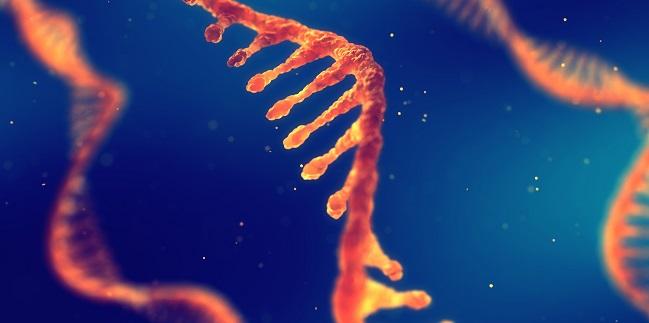Early Data Favorable for New RNAi Therapies to Reduce Triglycerides
Two small studies, with two different targets, show effective and sustained triglyceride-lowering in healthy volunteers.

PHILADELPHIA, PA—Therapies using RNA interference (RNAi) to target genes that encode proteins involved in lipid and lipoprotein metabolism—specifically apolipoprotein C-III (APOC3) and angiopoietin-like protein 3 (ANGPTL3)—can effectively reduce plasma triglycerides, according to early data from two reports.
These reductions were lasting and, in the case of the APOC3-silencing therapy, accompanied by an increase in HDL cholesterol. Both therapies also reduced LDL cholesterol, researchers reported.
Much like inclisiran (The Medicines Company), an RNAi therapy that interrupts PCSK9 synthesis and reduces LDL cholesterol, the two new therapies do their work in the liver, where they silence genes.
The results, presented yesterday at the American Heart Association 2019 Scientific Sessions, “suggest a new mechanism for potentially addressing residual risk of CVD in patients with dyslipidemias,” said Gerald Watts, DSc, PhD, DM (University of Western Australia, Perth), who led the phase I/IIa study on ANGPTL3.
A separate phase I/IIa study, led by Christie Ballantyne, MD (Baylor College of Medicine, Houston, TX), focused on APOC3.
Each study enrolled 40 healthy volunteers. Both examined the safety and tolerability of the therapies when given as a single dose or two monthly doses. The durability of their effect on triglyceride levels, said Ballantyne, “make them ideal for populations with therapy adherence issues.”
This is because patients with severe high triglycerides who miss taking their triglyceride medications for a week or two can end up in the hospital with pancreatitis, he explained. “It’s very unforgiving.”
Potential recipients include individuals with familial chylomicronemia syndrome caused by impaired lipoprotein lipase leading to extremely high triglyceride levels (> 880 mg/dL), which affects around one in a million people, as well as patients who have severe high triglycerides with pancreatitis. “For both conditions, adherence to current therapies, including strict diet/lifestyle changes, is challenging,” Ballantyne explained at a media briefing.
Side-by-Side
Daniel J. Rader, MD (University of Pennsylvania, Philadelphia), who served as a discussant following the presentations, told reporters: “We’re in a brave new world of RNAi therapeutics, a very interesting technology that’s similar to but mechanistically different than antisense oligonucleotides.” Here, the process is “catalytic,” in that “the same molecule can go around and destroy multiple aspects of the RNAs in a way that provides substantial longevity in terms of their duration of effect.”
Rader, too, described hypertriglyceridemia as an unmet clinical need. ANGPTL3 and APOC3 “are really great new targets that have come out of [research on] human genetics,” he commented.
He compared the studies side-by-side, noting that dose ranges were 10 to 100 mg and 35 to 300 mg, respectively, with APOC3 and ANGPTL3 silencing. The maximum target reduction in serum protein levels was 94% for APOC3 and 83% for ANGPTL3. Silencing of the APOC3 gene reduced triglyceride levels by 64% and inhibition of the ANGPTL3 gene did so by 66% at the highest doses. These reductions were stable through week 16 of the studies. Silencing of ANGPTL3 and APOC3 each led to decreases in mean maximum LDL level (30% and 25%, respectively, at the highest doses). In the APOC3 study, HDL cholesterol increased by as much as 52%. By contrast, in the ANGPTL3 study, HDL decreased as much as 16%.
No serious adverse events occurred in either study. Reactions at the injection site were rare and, when they did occur, were mild.
For Rader, it’s not yet clear which target will work best, either in reducing triglycerides or preventing cardiovascular events. Another question is how these RNAi therapies compare to antibody and antisense oligonucleotide-based methods that target the same proteins.
Donald Lloyd-Jones, MD (Northwestern Feinberg School of Medicine, Chicago, IL), who moderated the press conference, highlighted the speed of the advances in the RNAi field. “One of the really interesting parts of this story is the rapidity with which we went from target identification to therapeutics now moving into phase I and II trials, with inclisiran even in phase III trials,” he observed, adding that clinical trials must demonstrate not only that these gene-based therapies work but that they aren’t linked to any off-target safety signals.
Asked by TCTMD about the cost of producing the APOC3- and ANGPTL3-targeted therapies, neither Ballantyne nor Watts knew those details. But both saw opportunities, first in the patients with the greatest unmet clinical need followed by testing in a wider population.
Caitlin E. Cox is News Editor of TCTMD and Associate Director, Editorial Content at the Cardiovascular Research Foundation. She produces the…
Read Full BioSources
Ballantyne C. RNA interference targeting apolipoprotein C-III results in deep and prolonged reductions in plasma triglycerides. Presented at: AHA 2019. November 18, 2019. Philadelphia, PA.
Watts GF. RNA interference targeting hepatic angiopoietin-like protein 3 results in prolonged reductions in plasma triglycerides and LDL-C in human subjects. Presented at: AHA 2019. November 18, 2019. Philadelphia, PA.
Disclosures
- Ballantyne reports serving as a consultant to Abbott Diagnostics, Akcea, Amarin, Amgen, Arrowhead, Boehringer Ingelheim, Denka Seiken, Esperion, Intercept, Janssen, Matinas BioPharma, Novartis, Novo Nordisk, Regeneron, AstraZeneca, Merck, and Sanofi-Synthelabo, as well as receiving research grants from various companies.
- Rader reports serving as a consultant to Akcea, Alnylam, Novartis, Pfizer, and Verve, as well as being a co-founder of Staten Biotech and VascularStrategies.


Comments